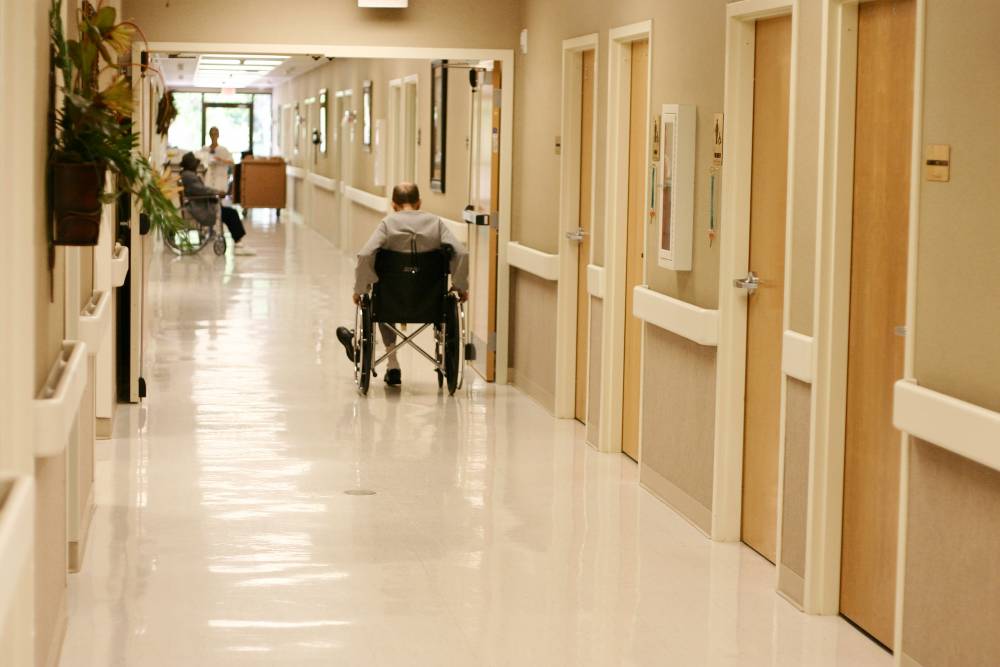
I gathered these thoughts together the day the Royal Commission into Aged Care Quality and Safety was announced – Sunday 16 September 2018 if my memory serves me well.
This information gathering was in response to the first question of the Prime Minister when making the announcement. The question was around the alleged $1.2 billion cuts to aged care.
Folks, I get it – there have been many cuts from both major sides of our Australian Government over a number of years. And there has been continuing growth in aged care funding based on population related indices etc. But what is galling around these discussions is that the major political parties and the bureaucrats seem unwilling to give simple, transparent responses to questions about these matters.
The recent Federal Senate Community Affairs Committee Hansard from 24 October 2018 make for mind numbing obfuscation around this very issue, with Opposition asking relevant questions, and Government, and Officers, all putting in their opinions, without any direct answer to what should be a simple question. This of course happens regularly at such Committees and is not confined to Aged Care. But this Australian is over it!
Why cannot our elected leaders and paid Officers answer simple questions and be held accountable for the policy and funding interventions they create into valued human service provision? We are projecting tens of thousands shortfall of residential aged care places by 2025 (ref 1) and now some 121,000 not provided with an appropriate level of community care packages short for older Australians already assessed by Government as needing community delivered aged care services. (ref 2).
Of that number, almost 57,000 had no package allocated. A discussion around the residential care funding issues can be found below. Parliamentarians prefer to support their side of the debate, but the Department of Health and Federal Parliamentary Library advice really does paint a helpful and insightful picture into this matter of “funding cuts”.
I shall leave it to you to decide. But if you were to ask me, a return to the residential aged care sector of the $1.2 billion in ACFI funding cuts, along with a requirement for providers to sign off on their direct care staff ratios, would provide, on average, an immediate return to a ratio of 3.2 Hours per Resident per Day (“HRPD”), and begin a move to the 4.3 (or from my research, 4.2) HRPD as soon as possible.
“Recent changes:
ACFI subsidy expenditure has been growing more quickly than expected. The Australian Government believes the unexpected growth in claims cannot be explained by an increase in the frailty of residents, although many in the industry disagree. In order to rein in expenditure, around $1.7 billion in savings over four years were included in the Mid-Year Economic and Fiscal Outlook 2015–16 (MYEFO) and the 2016–17 Budget, to be achieved through changes to ACFI scoring and subsidy indexation. Despite these savings, residential aged care expenditure was still forecast to grow at around 5.1 per cent per annum.”
A summary of the impact of these two difficult measures can be found here.
“Rein in expenditure.” Is that not just a euphemism for a cut to funding?
You decide. Nice chatting!
Wayne Belcher
References:
Ref 1- Aged Care Financing Authority, ‘Sixth report on the Funding and Financing of the Aged Care Sector’ (Aged Care Financing Authority, 2018), 36.
Ref 2 – Department of Health, ‘HOME CARE PACKAGES PROGRAM Data Report 4th Quarter 2017 – 18’ (Department of Health, 2018), Table 7, 11.
Well hello Wayne, you have hit the nail on the head. I’m an approved provider and I’m struggling under the ACFI cuts. On top of the ACFI cuts we need to add the removal of the payroll tax subsidy, the axing of the high dementia subsidy and for us lucky ducks in Canberra we now have to contribute 1.2% of our entire payroll to the state government (quarterly) and already we have seen 75% of ex staff members not being able to access this money.
Every business deserves a decent ROI, why not aged care too?
Nice chatting Wayne
I am all for business getting a decent ROI, but for that decent return, business MUST provide QUALITY CARE. There must be mandated correct staff ratios, proper training and just as important a viable, no nonsense inspection system to ensure the Elderly are getting quality care. The current system, even if you increase “no notice “” inspection 1000% will not work. The “no notice” inspection system has to be conducted by a new independent agency similar to the ACCC. The current system is too “friendly”with providers. I would also recommend an investigation into where the money goes. How much to direct care money to ensure a decent ROI and how much money spent on indirect care. My guess is there could be some indirect care money “fat” that could be trimmed to ensure more money goes to direct care. So to sum up.
1. More money to direct care by reducing indirect care government “fat” to insure providers get a decent ROI.
2. Increased employee training to improve QUALITY CARE.
3. Completely relocate inspection duty to a NEW AGENCY with powers similar to the ACCC. Providers will get their decent ROI IF they provide QUALITY CARE. The new agency will perform real “NO NOTICE” inspections and have the authority to financially punish operators who take the decent ROI but do not deliver QUALITY CARE.
4. Establish mandatory staffing levels based on a “model care home manning study.” Minimum mandatory staffing levels would be established for each care home based on population/skill deviations from the “model.”” Operators would be required to staff at established levels in order to receive their “”decent ROI.””
The best standards in the world will not work IF the INSPECTION mechanism is faulty.
Hopefully something good will result from the RC. Shame that we have to wait that long while elderly suffer.